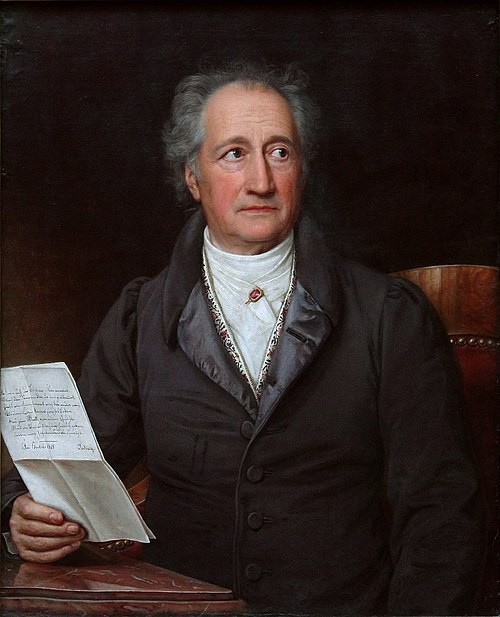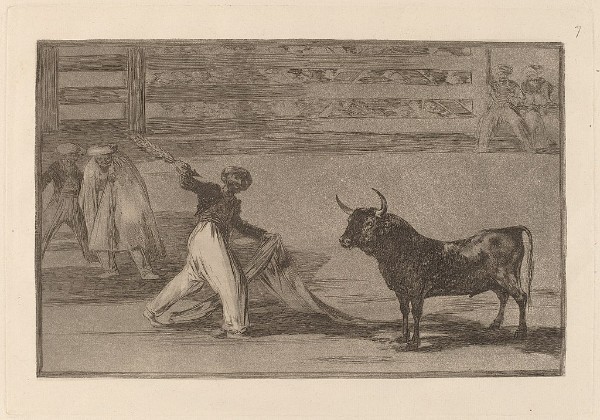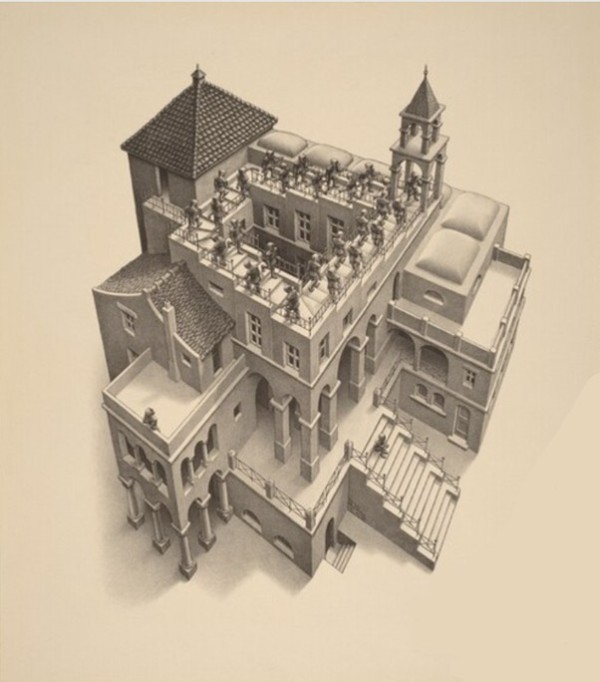Inspirations Behind John Luther Adams’ The Immeasurable Space of Tones
Latvian-American artist Mark Rothko (1903–1970) is best known for his colour field paintings. Colour field was a purely abstract form of expressionism where, unlike abstract expressionism, all references (emotional, mythic, or religious) were removed, and only colour remained. It began in the 1950s with artists such as Mark Rothko, Barnett Newman and Clyfford Still, and expanded in the 1960s with Helen Frankenthaler, Morris Louis, Kenneth Noland, Alma Thomas, and Sam Gilliam.
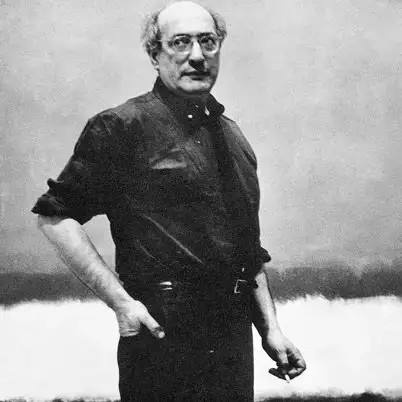
Mark Rothko
Born in Latvia, Rothko emigrated with his family in 1913, when his father was afraid his eldest son would be drafted into the Russian Army. His father and older brothers went first, and then Mark, his sister, and mother joined them, travelling first to Ellis Island and then to Portland, Oregon, to meet up together.
Although he received a scholarship to attend Yale University, he lost that scholarship after his first year. He stayed in New Haven, working as a waiter and delivery boy to support his schooling. After his second year at Yale, he left it forever and moved to New York.
He attended the Parsons School of Design, which was part of The New School for Social Research, a private research university in New York. The New School was founded in 1919 as a school for adult students seeking ‘an unbiased understanding of the existing order, its genesis, growth and present working’.
For Rothko, New York was a special place for artistic development: modernist painters had frequent exhibitions, and the city’s museums held the history of art on their walls. He was influenced by German Expressionist painters, Swiss artist Paul Klee, and French Expressionists because the whole world came to New York. Rothko participated in a group show in 1928, and his work was well-received. His first one-man show was held in 1933 at the Portland Art Museum. His colour work was noted from his East Coast shows in 1935 and in Paris in 1936.
Over time, Rothko developed his art. His early period (1924–1939) was a mix of representational art and impressionism, generally depicting urban scenes. He was working towards a theory that a work of art shouldn’t start with drawing, but with colour. His watercolours started using fields of colour.
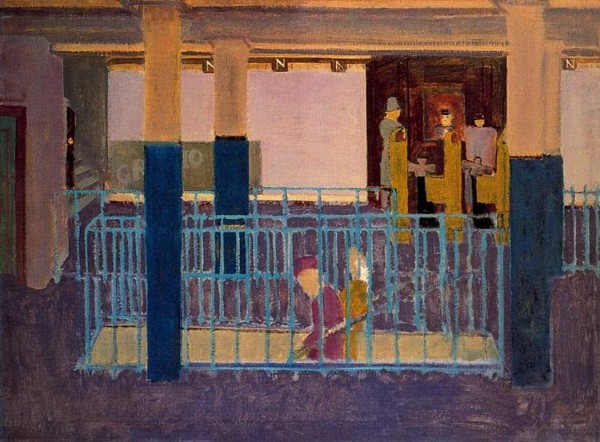
Rothko: Entrance to Subway, 1938 (private collection)
His middle period (1940–1950) works more with abstraction. His colour field work emerged from his watercolours and into his paintings. His readings in mythology and psychology gave him themes of myth and ritual, prophecy and the unconscious mind. He adapted the surrealist technique of automatic writing and applied it to art, letting his mind go blank and letting his brush wander where it might so that his unconscious mind could release its energy.
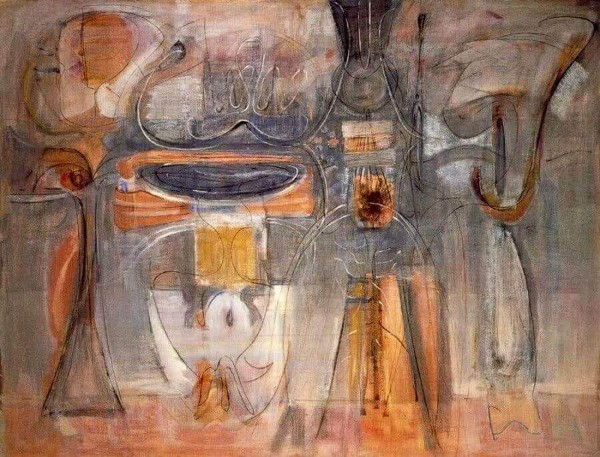
Rothko: Rites of Lilith, 1945
It is in his mature period (1951–1966) that colour fields came into their own. His colours take over, and there’s no representational imagery at all. He sought an emotional response from his viewer to realise the meaning of the painting.
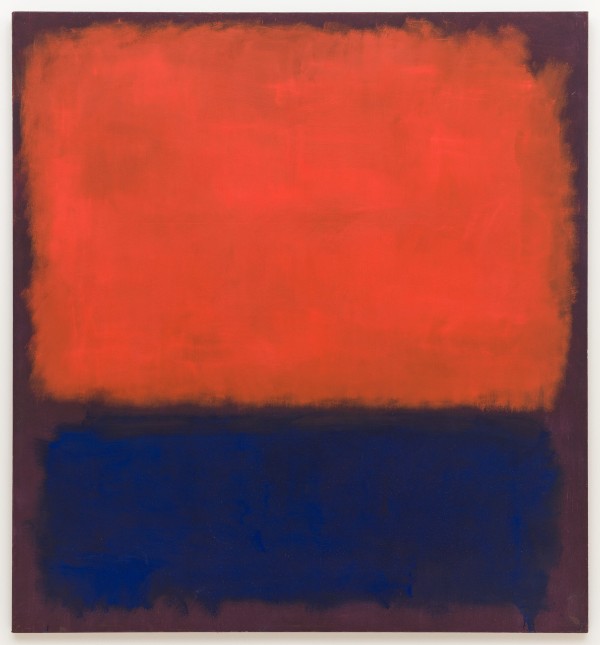
Rothko: No. 14, 1960, 1960 (San Francisco Museum of Modern Art)
American composer John Luther Adams took the last work of Rothko’s middle period, No. 5, 1950, as inspiration for his work The Immeasurable Space of Tones.
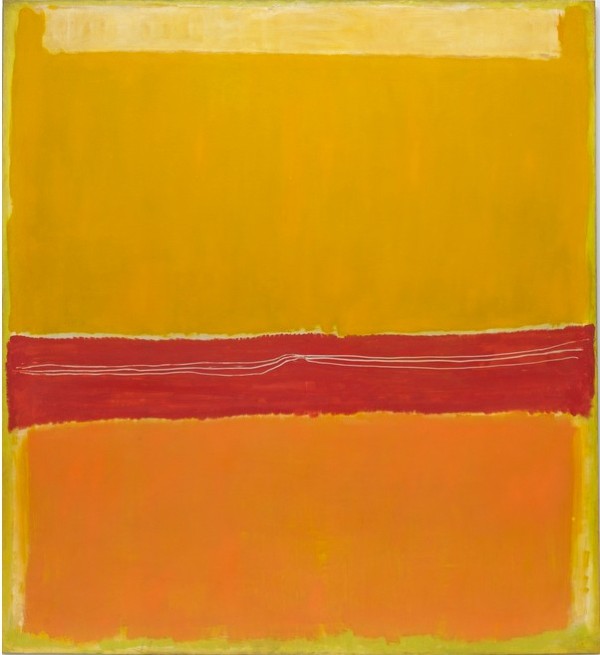
Rothko: No. 5/No. 22, 1950, 1950 (New York: Museum of Modern Art)
In Rothko’s painting, he hasn’t quite gone to solid colour fields; the red-orange field is inscribed with three thin lines. His colours don’t go to the edge but pull back from it slightly, seeming to hover over the surface.
The choice of colours is affected by our eyes’ chromatic afterimaging. If you stare at each colour separately, then it affects how you see the juxtaposed colour: the red-orange in the middle makes the yellow above it look as though it has a hint of green. The yellow, in turn, seems to infect the orange with blue.
Rothko, however, despite these cross-colour images, still wanted the viewer to see the emotions in his work, such as ‘tragedy, ecstasy, doom’, which he called ‘the big emotions’. He called this painting ‘violent’.
Following Rothko’s move to colour field works, John Luther Adams sought to bring this to music. He notes that ‘In recent years, gesture and figuration have disappeared from my music. What used to be the background has emerged to become a musical world composed entirely of floating colour fields’.

John Luther Adams
In The Immeasurable Space of Tones, we have the equivalent of No. 5, 1960. The timbres of individual instruments float across the background, often established by the held notes of the electric keyboard. The piano might emerge from the sound field, and then the vibraphone or marimba. Although they merge into a moving sound mass, the individual voices still maintain a separate concept. The colours of the individual voices give texture to the work, adding ripples and ridges to what might otherwise sound seamless.
John Luther Adams: The Immeasurable Space of Tones (Marty Walker, bass clarinet; Robin Lorentz, violin; Amy Knoles, vibraphone; Nathaniel Reichman, electric keyboards Bryan Pezzone, piano)
Adams is taking a difficult concept in art and creating an equally difficult and thought-provoking concept in music. More than background to something else, his music in The Immeasurable Space of Tones is moving us across space and time in a unique way. You can float on it, or you can follow individual voices, or hear how the whole forms a sound mass on its own.
For more of the best in classical music, sign up for our E-Newsletter

